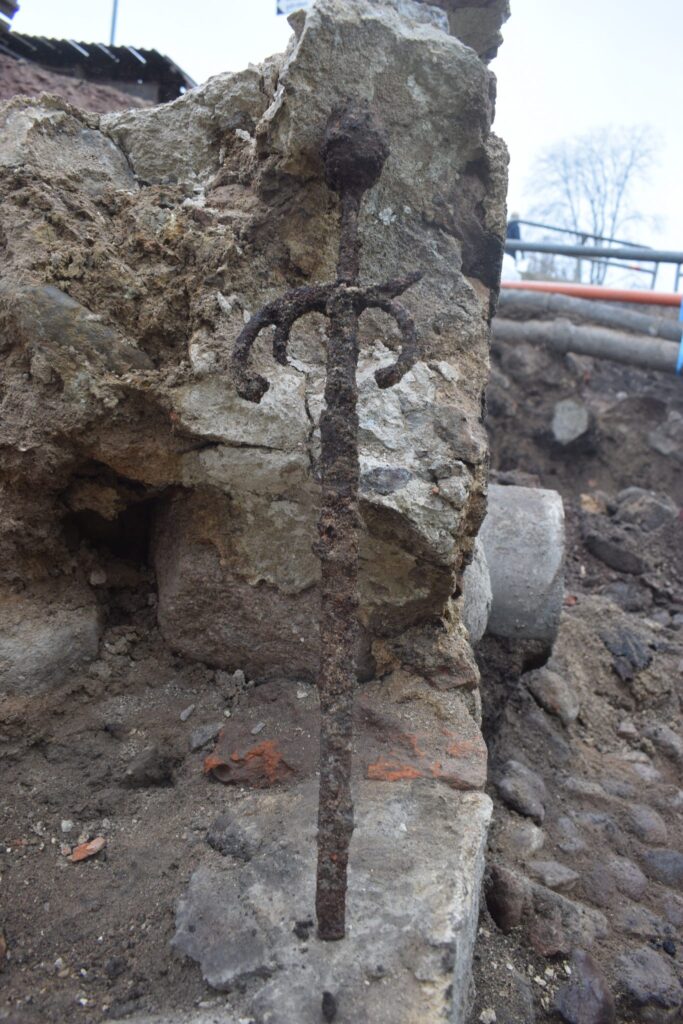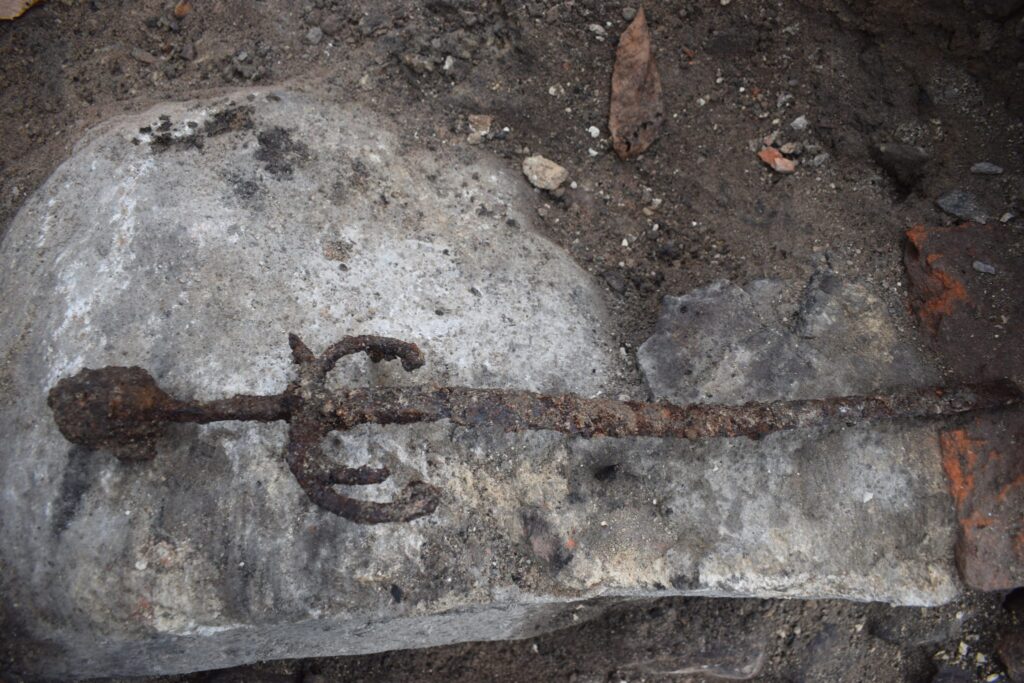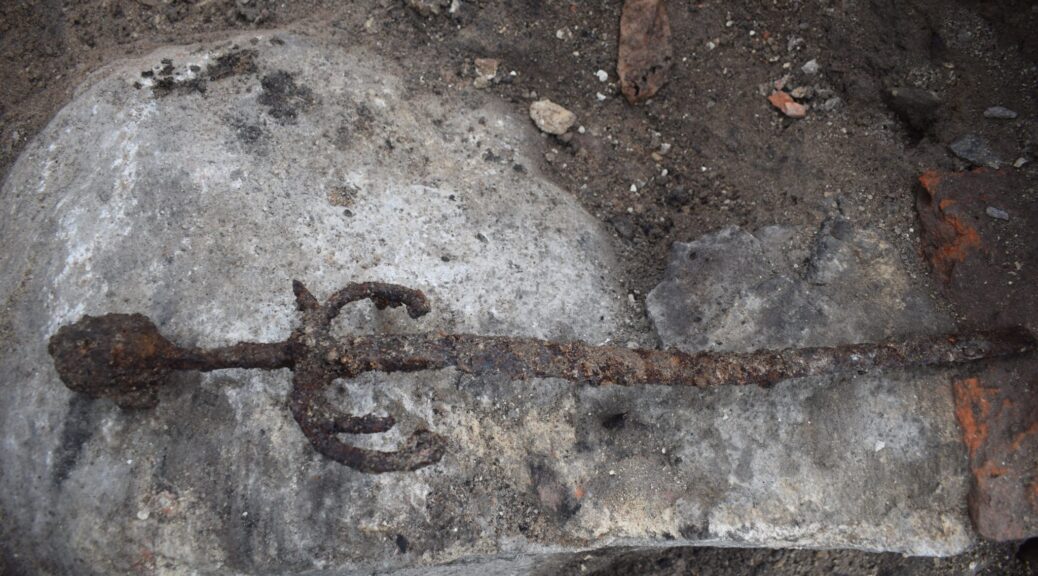This rare battle sword just found in Sweden is ‘an evolutionary leap’
A basement at the intersection of Kungsgatan and Västerlånggatan in Gamla stan turned out to harbor a secret. A weapon lay in the racial masses from the warlike events in the summer of 1611.
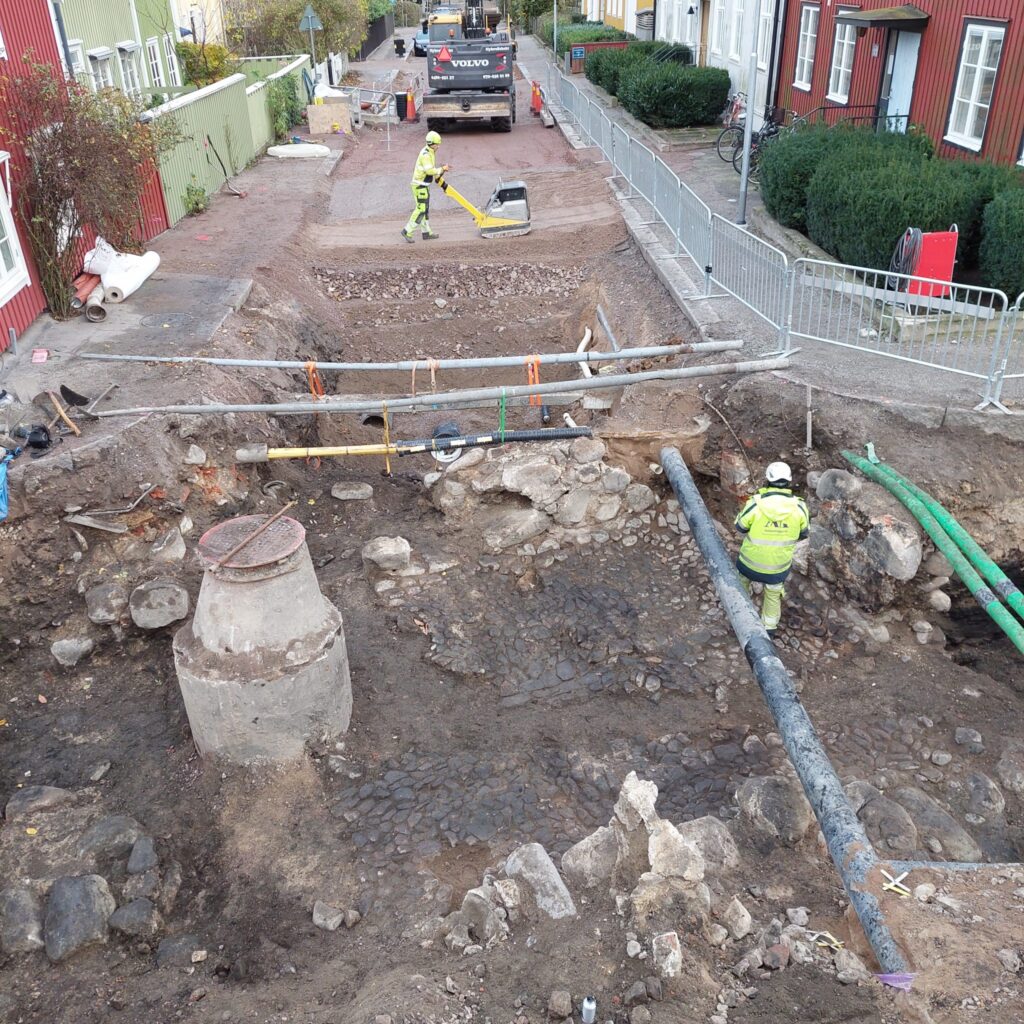
During the past week, we have investigated a stone cellar at the intersection of Kungsgatan and Västerlånggatan in the old town of Kalmar.
The basement was relatively damaged by the previous wiring, but we can still state that it was about five by eight meters in size. At the time of writing, we have just documented the top cobbled floor level.
The basement had a slope to the south, which opened onto the medieval Västerportsgatan.
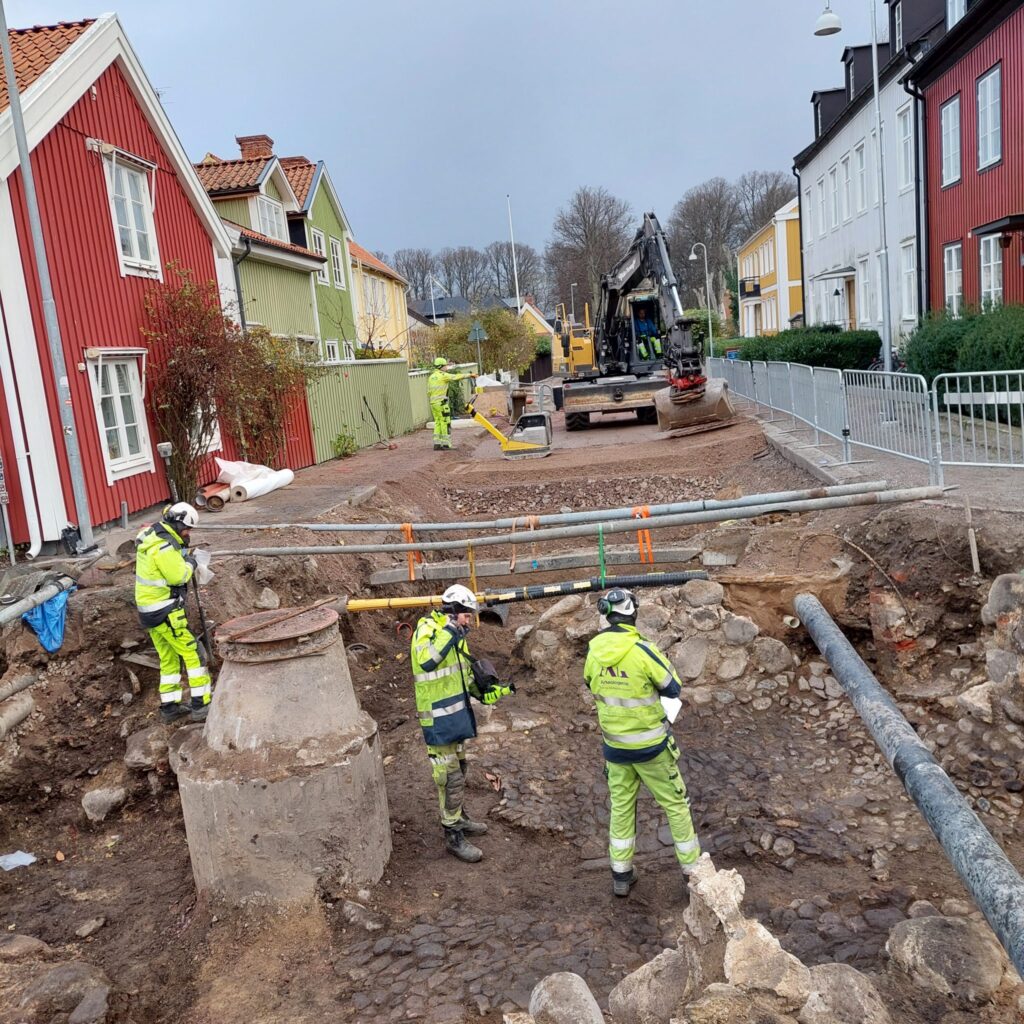
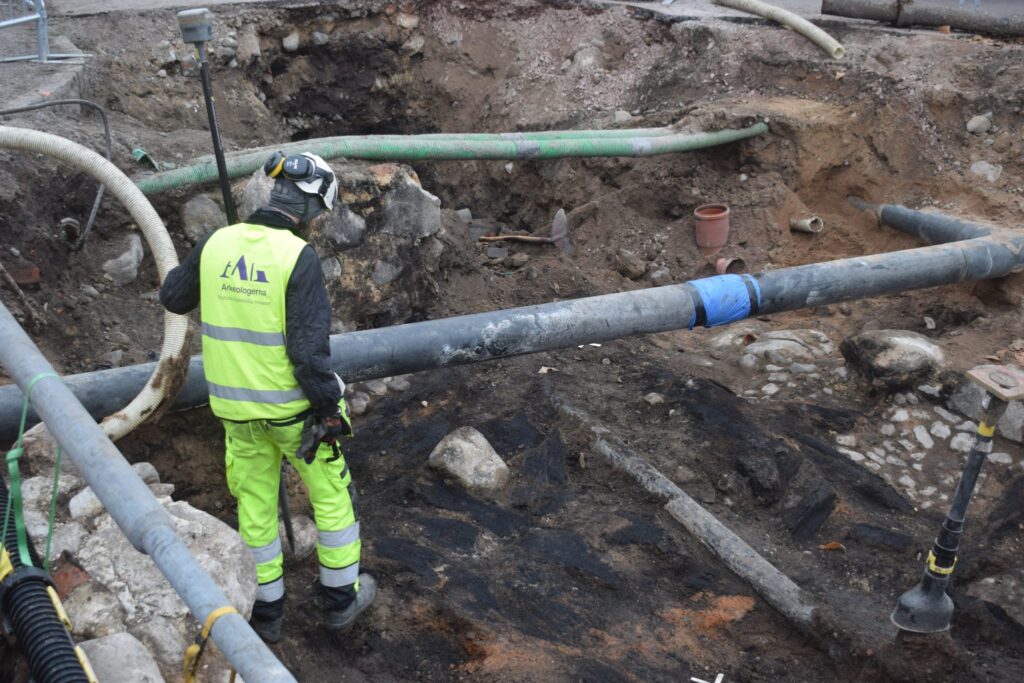
The farm at Tegmarsgatan
The farm in question was located on the corner of Västerportsgatan and Tegmarsgatan, which today roughly corresponds to the area where Kungsgatan and Västerlånggatan meet.
It is also called in the sources “dagmar straten”, “strata/platea Teghmers”, “Thänkmars gatu” and “Teymars gatu”. Tegmarsgatan had a southwest–northeast orientation and formed an arch in the same direction as the city wall further north. Among other things, the name has been explained as coming from German, and equivalents can be found in the medieval documents of the city of Wismar. Over time, the original name and meaning have fallen into oblivion.
Gotskalk Hulskede’s farm?
Gotskalk Hulskede, who is mentioned in the written sources as early as 1368, is probably the first known owner of the corner farm. Gotskalk is also included in the declaration of allegiance to Queen Margareta in 1389.
Several of the plot owners are known during most of the 15th century. The thought book mentions, for example, Jacop Skytte and Gödeka printers. One of the records (1483) describes the farm as being “next west benkth thoressons gardh in hyrnith oc oppa höhra handen as you walk to mwren lithla gathorna”.
A violent fire in 1611
The farm was apparently burned down in the bloody summer of 1611 in connection with the Kalmar War. The cobbled floor was covered with broken brick, stone and wood from the upper floors of the house.
Here were, among other things, two severely burnt hand mills and a pile of burnt grains. Perhaps it is the case that a kitchen on the floor above collapsed into the basement in connection with the fire. But this was not all that lay here……
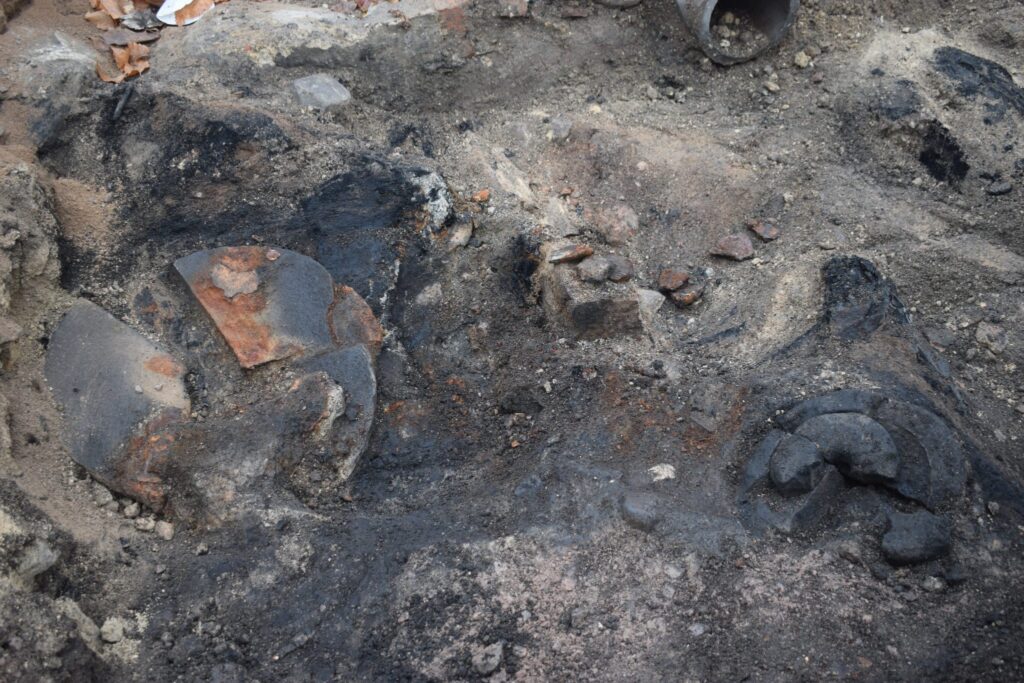

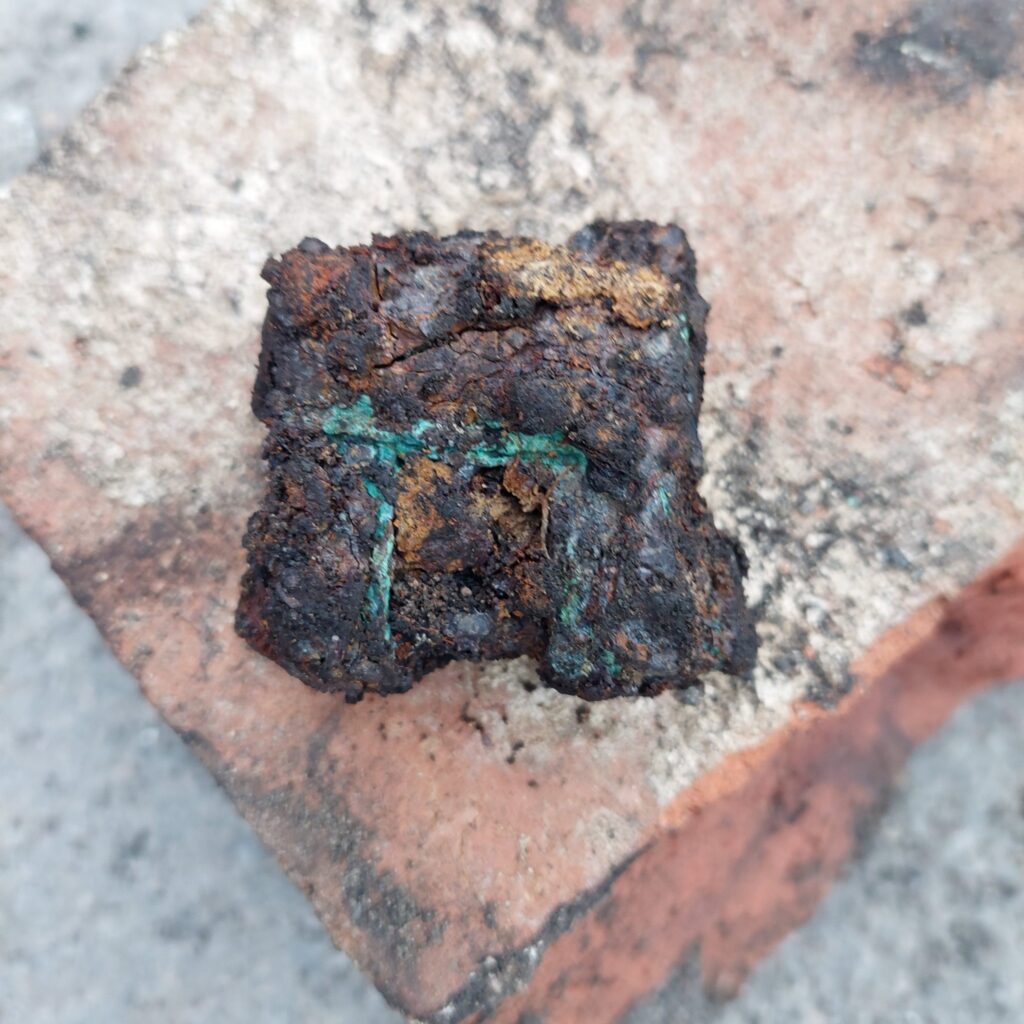
A Danish soldier’s lost weapon
In the masses was also a rusty weapon that clearly gossips about what happened. We have had the battlefield archaeologist Bo Knarrström take a look at it and he states that this amazingly well-preserved stabbing weapon is something in between the medieval sword and the more modern sword, which would eventually come to dominate the 17th-century battlefield.
At the time of the Kalmar War, the European armies were at a turning point – the military revolution – where new tactics and weapon systems were being tested.
The find fits well into the arsenal of the time. A Danish soldier lost his beautiful weapon in battle in the fateful summer of 1611. After conservation and deeper research, we will be able to tell you more.
